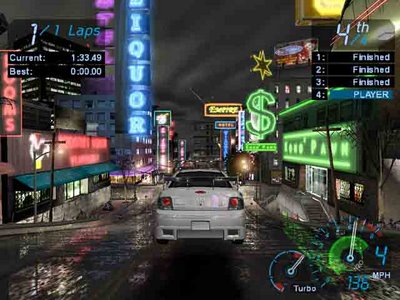I attended a panel discussion in New
York City last night, sponsored by David Haskell’s Forum for Urban Design. The
attendees, as you’ll see on the invitation, below, represented a number of
hefty publications – meaning the combined critical and journalistic weight of
the writers in the room was almost enough to redesign Manhattan…
Ultimately, the conversation was both stimulating and worth
the trip – but I came away thinking two or three points still needed to be
made. Although some of this did come up afterward, without controversy, whilst
talking to David Haskell and the panelists, I do want to expand on and clarify
some things.
First, early on, one of the panelists stated: “It’s not our job to say: Gee, the new Home Depot sucks…”
But of course it is!
That’s exactly your role; that’s exactly the built environment as it’s now experienced by the majority of the American public. “Architecture,” for most Americans, means Home Depot – not Mies van der Rohe. You have every right to discuss that architecture. For questions of accessibility, material use, and land policy alone, if you could change the way Home Depots all around the world are designed and constructed, you’d have an impact on built space and the construction industry several orders of magnitude larger than changing just one new high-rise in Manhattan – or San Francisco, or Boston’s Back Bay.
You’d also help people realize that their local Home Depot is an architectural concern, and that everyone has the right to critique – or celebrate – these buildings now popping up on every corner. If critics only choose to write about avant-garde pharmaceutical headquarters in the woods of central New Jersey – citing Le Corbusier – then, of course, architectural criticism will continue to lose its audience. And it is losing its audience: this was unanimously agreed upon by all of last night’s panelists.
Put simply, if everyday users of everyday architecture don’t realize that Home Depot, Best Buy, WalMart, even Tesco, Sainsbury’s, and Waitrose, can be criticized – if people don’t realize that even suburbs and shopping malls and parking garages can be criticized – then you end up with the architectural situation we have today: low-quality, badly situated housing stock, illogically designed and full of uncomfortable amounts of excess closet space.
And no one says a thing.
 To use a musical analogy: you can have a thousand and one
interesting, inspired, intelligent, widely referring, enthusiastic, even
opinion-changing conversations about music with almost anyone – including what
that person listens to, why, what soundtracks they own, what “bip-hop” really
means, whether or not “post-techno” exists, what they actually want to hear on
the radio, should file-sharing be legalized, is Chris Cornell this generation’s
Sammy Hagar (answer: yes), etc.
To use a musical analogy: you can have a thousand and one
interesting, inspired, intelligent, widely referring, enthusiastic, even
opinion-changing conversations about music with almost anyone – including what
that person listens to, why, what soundtracks they own, what “bip-hop” really
means, whether or not “post-techno” exists, what they actually want to hear on
the radio, should file-sharing be legalized, is Chris Cornell this generation’s
Sammy Hagar (answer: yes), etc. But to infer from that conversation – because nobody mentioned Stravinsky or Bach – that those people are philistines who don’t care about music is absurd. In other words, maybe my cousin can’t cite Deleuze and maybe he has no idea who Fumihiko Maki is, or even Frank Lloyd Wright, but does that mean he doesn’t care about architecture?
As it is, one critic writes for approval by another critic, who writes for another critic, who writes for some editor somewhere, or for the head of a department, and no one wants to step out of line. You want to talk about a videogame, or a Tim Burton film, or castles as described in the books of J.K. Rowling – but nope: it’s all Zaha, all the time.
Meanwhile, subscription rates are plummeting.
Further – though this may contradict what I say above –
strong and interesting architectural criticism is defined by the way you
talk about architecture, not the buildings you choose to talk about.
In other words, fine: you can talk about Fumihiko Maki instead of, say, Half-Life, or Doom, or super-garages, but if you start citing Le Corbusier, or arguing about whether something is truly “parametric,” then you shouldn’t be surprised if anyone who’s not a grad student, studying with one of your friends at Columbia, puts the article down, gets in a car – and drives to the mall, riding that knotwork of self-intersecting crosstown flyovers and neo-Roman car parks that most architecture critics are too busy to consider analyzing.
All along, your non-Adorno-reading former subscriber will be interacting with, experiencing, and probably complaining about architecture – but you’ve missed a perfect chance to join in.
Which brings me to two final points, and I’ll try to be quick:
1) Architectural criticism means writing about architecture, not writing about buildings.
Incredibly, in the midst of the talk last night, one of the panelists mentioned Archigram – almost wistfully – commenting that, despite a lack of built projects, Archigram still managed to dynamize and re-inspire the architectural scene of its era. This was done through ridiculous ideas, cheap graphics, a sense of humor, and enthusiasm. But, wait, what was –? Oh, that panelist must have forgotten, because he immediatetly went back to discussing buildings: not ideas, not enthusiasm, not architecture.
Architecture is not limited to buildings!

Temporary Air Force bases, oil derricks, secret prisons, multi-story car parks, J.G. Ballard novels, Robocop, installation art, China Miéville, Department of Energy waste entombment sites in the mountains of southwest Nevada, Roden Crater, abandoned subway stations, Manhattan valve chambers, helicopter refueling platforms on artificial islands in the South China Sea, emergency space shuttle landing strips, particle accelerators, lunar bases, Antarctic research stations, Cape Canaveral, day-care centers on the fringes of Poughkeepsie, King of Prussia shopping malls, chippies, Fat Burger stands, Ghostbusters, mega-slums, Taco Bell, Salt Lake City multiplexes, Osakan monorail hubs, weather-research masts on the banks of the Yukon, Hadrian’s Wall, Die Hard, Charlie and the Chocolate Factory, Warren Ellis, Grant Morrison, Akira, Franz Kafka, Gormenghast, San Diego’s exurban archipelago of bad rancho housing, Denver sprawl, James Bond films, even, yes, Home Depot – not every one of those is a building, but they are all related to architecture.
Every item in that list should be considered fair game for truly exciting, dynamic, and intellectually adventurous forms of architectural criticism. (And, obviously, many people already are writing about these things – including some of the panelists from last night. I’m just making a point).
2) Finally: The Archigram of today is not studying with Bernard Tschumi and openly imitating The Manhattan Transcripts. The Archigram of today works for Electronic Arts, has no idea who Walter Gropius is, and offers more insights about the future of urban design, space, and the built environment to more people, in more age groups, in more countries, than any practicing architectural critic will ever do, writing about Toyo Ito.
Videogames are the new architectural broadsides.
Being an architectural critic means writing about
architecture – even writing about Le Corbusier and Toyo Ito, sure – but
that means writing about architecture in its every manifestation: whether it’s
built or not, designed by an architect or not, featured in a videogame or not,
found anywhere other than inside a novel or not, whether it’s still intact or
not – even whether it’s on planet Earth.
If a critic can get people to realize that the everyday architectural world of garages and malls and bad haunted house novels is worthy of architectural analysis – and that architecture is even exciting to discuss – then maybe the trade journals can get some of their subscribers back. At the very least, it’s worth a try.
Even if that means saying: Gee, the new Home Depot sucks.
http://www.bldgblog.com/2006/05/architectural-criticism/

No comments:
Post a Comment